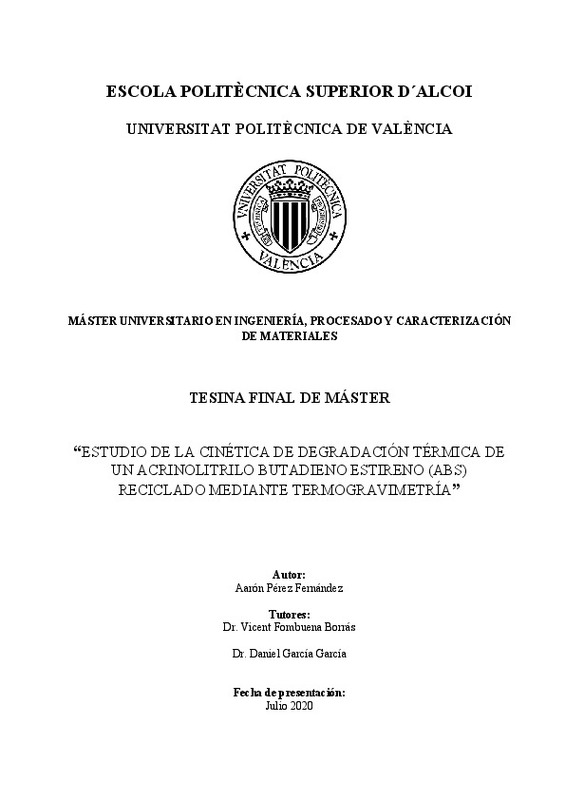JavaScript is disabled for your browser. Some features of this site may not work without it.
Buscar en RiuNet
Listar
Mi cuenta
Estadísticas
Ayuda RiuNet
Admin. UPV
Estudio de la cinética de degradación térmica de un acrilonitrilo butadieno estireno (ABS) reciclado mediante termogravimetría
Mostrar el registro completo del ítem
Pérez Fernández, A. (2020). Estudio de la cinética de degradación térmica de un acrilonitrilo butadieno estireno (ABS) reciclado mediante termogravimetría. http://hdl.handle.net/10251/150498
Por favor, use este identificador para citar o enlazar este ítem: http://hdl.handle.net/10251/150498
Ficheros en el ítem
Metadatos del ítem
| Título: | Estudio de la cinética de degradación térmica de un acrilonitrilo butadieno estireno (ABS) reciclado mediante termogravimetría | |||
| Autor: | Pérez Fernández, Aarón | |||
| Director(es): | ||||
| Entidad UPV: |
|
|||
| Fecha acto/lectura: |
|
|||
| Resumen: |
[ES] El presente trabajo presenta un amplio estudio cinético de la degradación térmica de un Acrilonitrilo butadieno estireno (ABS) reciclado. El estudio se ha llevado a cabo mediante termogravimetría (TGA) con métodos ...[+]
[EN] This work presents an in-depth kinetic study of the thermal degradation of recycled acrylonitrile-butadiene-styrene (ABS). The study was carried out by thermogravimetry (TGA) with non-isothermal methods. The tests ...[+]
|
|||
| Palabras clave: |
|
|||
| Derechos de uso: | Reserva de todos los derechos | |||
| Editorial: |
|
|||
| Titulación: |
|
|||
| Tipo: |
|
recommendations
Este ítem aparece en la(s) siguiente(s) colección(ones)
-
EPSA - Trabajos académicos [5826]
Escuela Politécnica Superior de Alcoy







